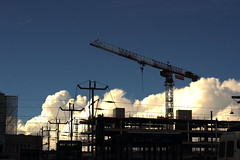India is a land of opportunities; opportunities for those people who want to contribute their
efforts in providing better quality affordable housing solutions. With such a high density of
people in urban areas along with huge pressure on natural resources; it is a pertinent to provide
affordable housing without compromising on sustainable approach towards environment.
Driven by increasing urbanization, rising incomes and decreasing household sizes, the residential
demand in India has been on an upswing over the past few years. The Working Committee of
the 12th Plan (2012-17) has concluded that the total shortage of dwelling units at the beginning
of Twelfth Plan Period i.e. 2012 is 18.78 million units with more than 96% of the shortage
of dwelling units is for middle and low income brackets. In the 11th Plan the total shortage of
dwelling units for middle and low income brackets was 70%. Unfortunately this figure is often
overlooked by development agencies because of lower profitability as the construction cost of
buildings built from conventional construction technologies is very expensive and affordable
housing doesn’t generate better returns for these agencies.
At present, our construction system is time consuming and costly; since it takes long time to
construct a building due to old and conventional techniques. The overall cost of construction
rises which ultimately is borne by developers who ultimately have no choice except escalating
the price of property; thus these properties are seldom affordable to people.
Prefabricated technologies can be a solution to the above problem. A recent prefabricated 10
storied construction in Mohali, exactly built in 48 hours can be a beacon of hope to developers
who wants to experiment with low-cost prefabricated technologies to construct affordable
housing. The steel prefabricated technology used to construct 10 storey Mohali building has vast
potential to totally revolutionize the much-needed infrastructure technology in the country by
rapidly speeding up construction of projects. The model of this building has been cleared for
areas in seismic Zone V.
The primary cost benefits of prefabricated structures derive from the speed of construction
and the optimization of raw material. Integrated engineering design and detailing enable
prefabricated buildings to be erected at a fraction of the time than a conventional building.
These time savings contribute to lower interest during construction and have the advantage of
commencing commercial activities far earlier. The optimization of raw material reduces the
material cost of the building, and the lighterweight of the structures brings about significant
savings in the foundation cost. Avoiding complexities, a pre engineered concrete building
efficiently replaces conventional methodologies of constructing a building. Thus, with these
modern methodologies, large buildings do not require years for construction and finishing.

